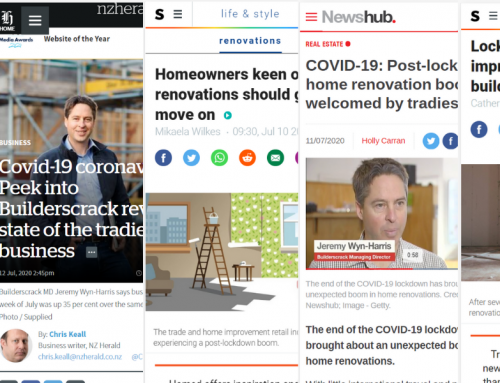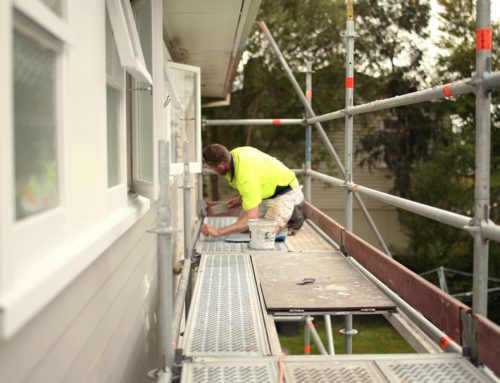
You secure a job, the work begins, and before you know it, you’re being asked to complete work outside of the original scope. How do you handle this variation? Get on and do it? Clarify the implications of the variation? Or something else?
In our experience there really is a “best” way to handle scope creep. This article applies to jobs under $30k, which don’t legally require a contract (but really should).
While it’s rare to find a job that turns out exactly as the brief described, there are other times when the homeowner’s requests cross the line of what you both had agreed. In the worst case, it hinders your ability to reasonably and safely complete the work you’ve been hired to do.
The good news? You can turn scope creep into a profitable exercise – if it’s well managed.
The truth about scope creep
At the heart of it, scope creep is an opportunity for more business. Scope creep becomes a problem when you’re not compensated for that extra business. Badly managed scope creep is usually born out of the desire to please the client – and getting stuck into the request without clarifying the variation in cost, time and result.
Then, when it comes time to charge for your work, the client is hit with an invoice that they weren’t expecting. In the best cases, the homeowner “gets it”, pays the invoice and that’s the end of that. In the worst cases, the homeowner adamantly refuses to pay for the variation and it becomes a real headache.
Time to put in place some measures to stop your business from being potentially exposed to these outcomes, and capitalise on the opportunity scope creep offers.
Call your lawyer
Before you’ve got an issue! Many jobs are started on a handshake. While sound contracts offer a much higher level of protection for both client and tradesperson, they can feel onerous to implement, and many operators don’t feel smaller jobs justify them. While aspects of this may be true, this practice is also more likely to result in disagreements than if a sound process and contract is put in place upfront.
A quote generally is the contract in the majority of jobs. This is where the management of scope creep begins. A carefully written and detailed quote can form the scope and is a legally binding contract. Adding some carefully written terms and conditions to the bottom of your quote is a great way to bridge the difference between quote and full-blown contract – this is where your lawyer can help. Discuss the nature of your business with them, the risks you’re aware of and get them to help define some basic clauses around adhering to the written scope.
Something along the lines of “Any variation of this scope of work must be in writing and signed by the parties”, but your lawyer will provide you with the exact wording. It can also be good to include “Any variation of this scope of work may affect the given time-frame of completion”.
It is important to make it clear to your customer if you’ve provided an estimate instead of a quote. Your estimate should also contain some basic clauses to clarify that what you are providing is an estimate and not a binding quote.
Your lawyer can help you develop the right clauses for your business. If you feel like they’re going overboard – let them know and have them simplify things. It’s important they balance your business’s need for legal protection, with your need for your client’s to easily understand the terms of engagement.
Follow a process
So you’ve communicated upfront though your quote or estimate that variations of the scope may result in additional costs, and it happens. The homeowner changes their mind and wants you to do things differently, or do more than you expected than what was initially agreed.
Put your sales hat on. It can be easy to feel a little frustrated at interruptions when in “work mode” – unfortunately that’s just the nature of working with some clients. It can also be easy to feel pressured to oblige. Both of these feelings can lead to taking actions that don’t serve your business or your customer’s job well.
Gently take control of the discussion. It may involve saying something as simple as, “Yes, let’s chat about that in 15 minutes”. By creating space, you allow yourself the opportunity to grab your notebook and position yourself ready to make the client accountable for their direction. And this is the crux of the issue. The best variations on the scope are those which the homeowner is knowingly accountable for – and is happy to be!
Document details, this may feel a bit dramatic – but it serves to create an impression to the homeowner that what they’re asking for is important, but not “simple”.
Consider the request and whether it is going to affect the quote. If it is, or if the sum of several small changes will affect the quote – amend the quote and resend to the homeowner as soon as possible. Get confirmation in writing that the homeowner received and is happy with the changes before working on the variation if possible. Ultimately, it’s best to work with your lawyer to develop the most appropriate process for your particular business and the typical jobs you undertake.
If you’re working based on an estimate, update the estimate and resend.
Communication is key
Treating variations as an extra sale can remove the frustration out of them. Ensuring the homeowner is both aware and accountable for any extra costs or adjustments to the project time frame is key.
Creating a warm, “anything is possible” approach to your communication around variations, while balancing with accountability on the homeowner for their decisions reduces the opportunities for confusion and disagreement.





